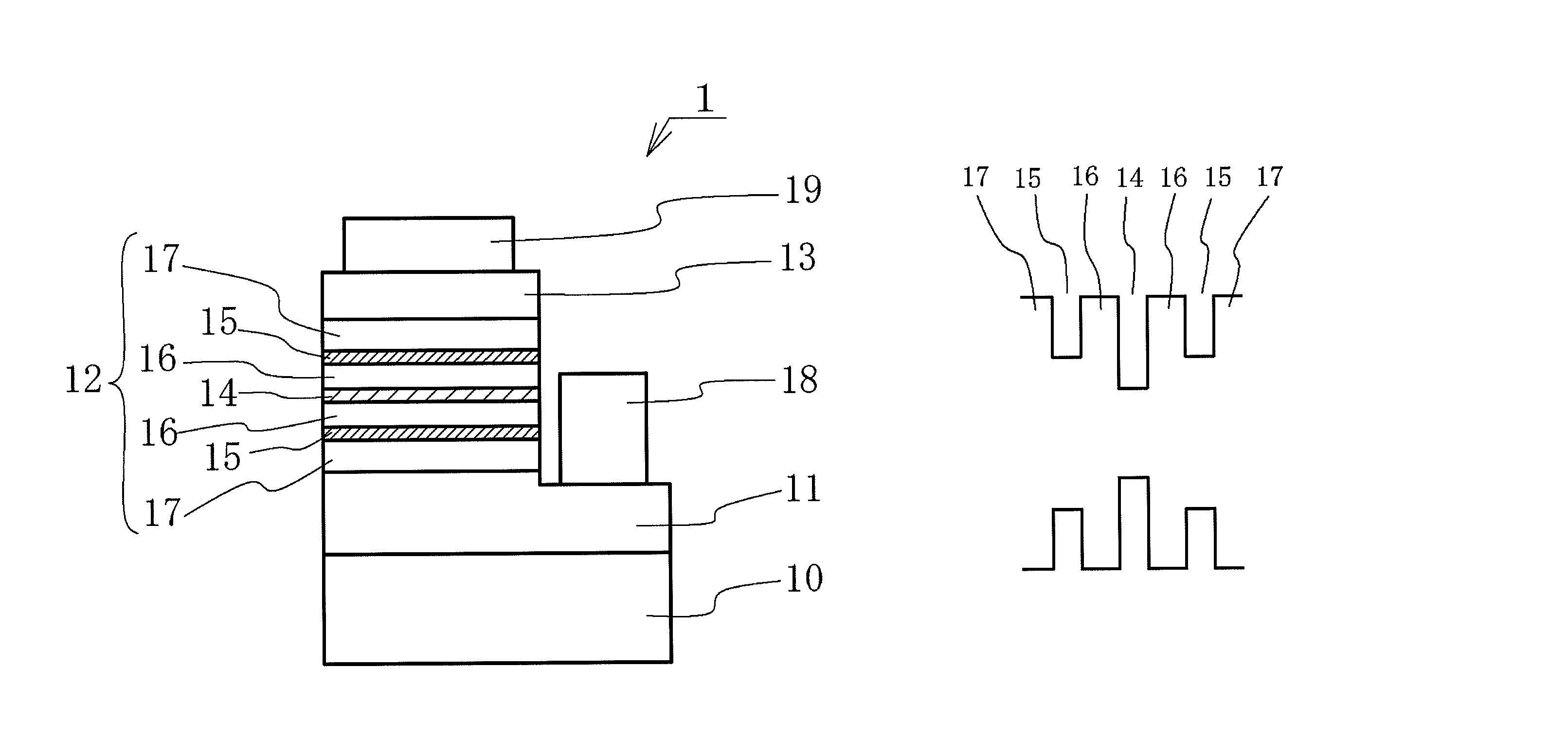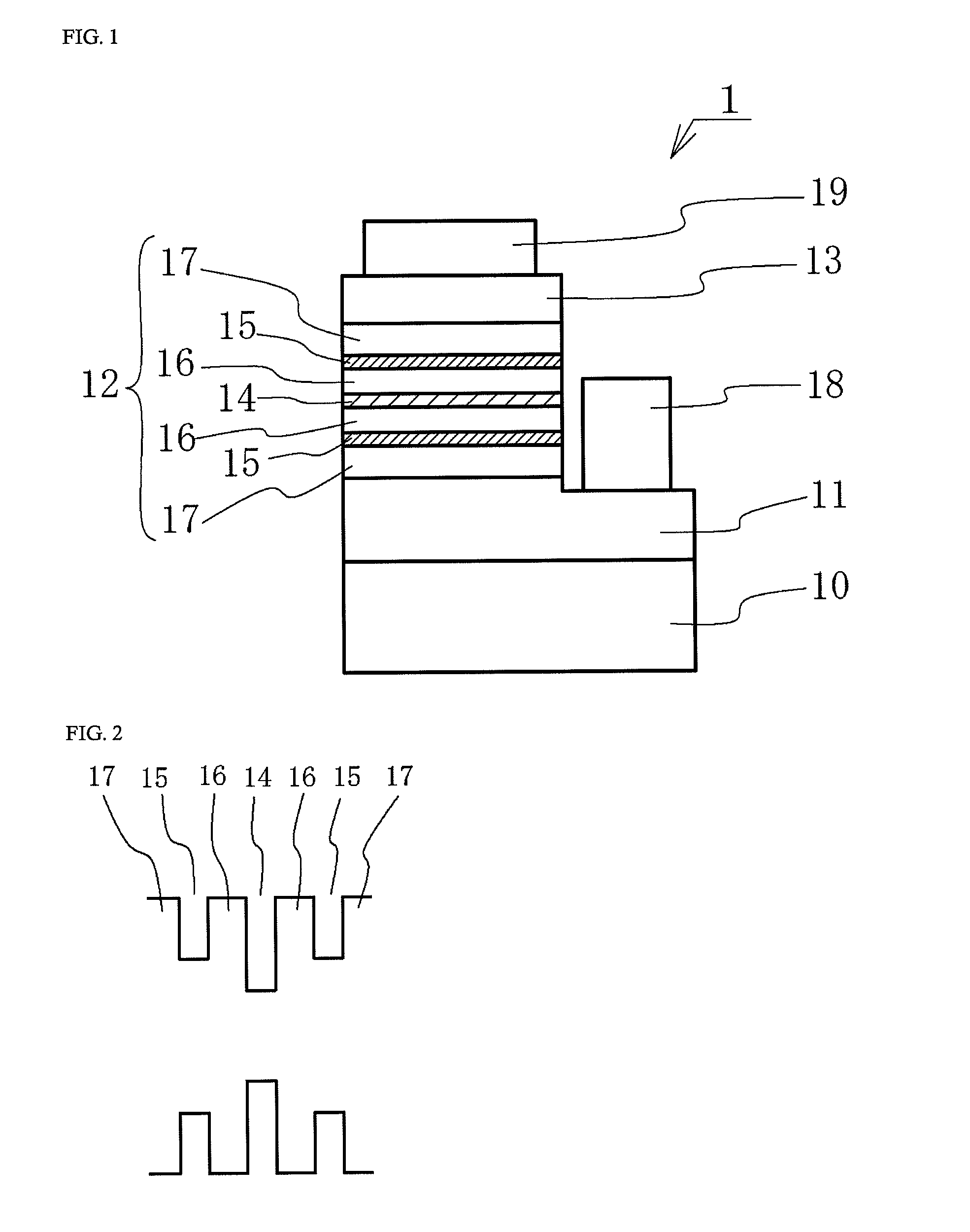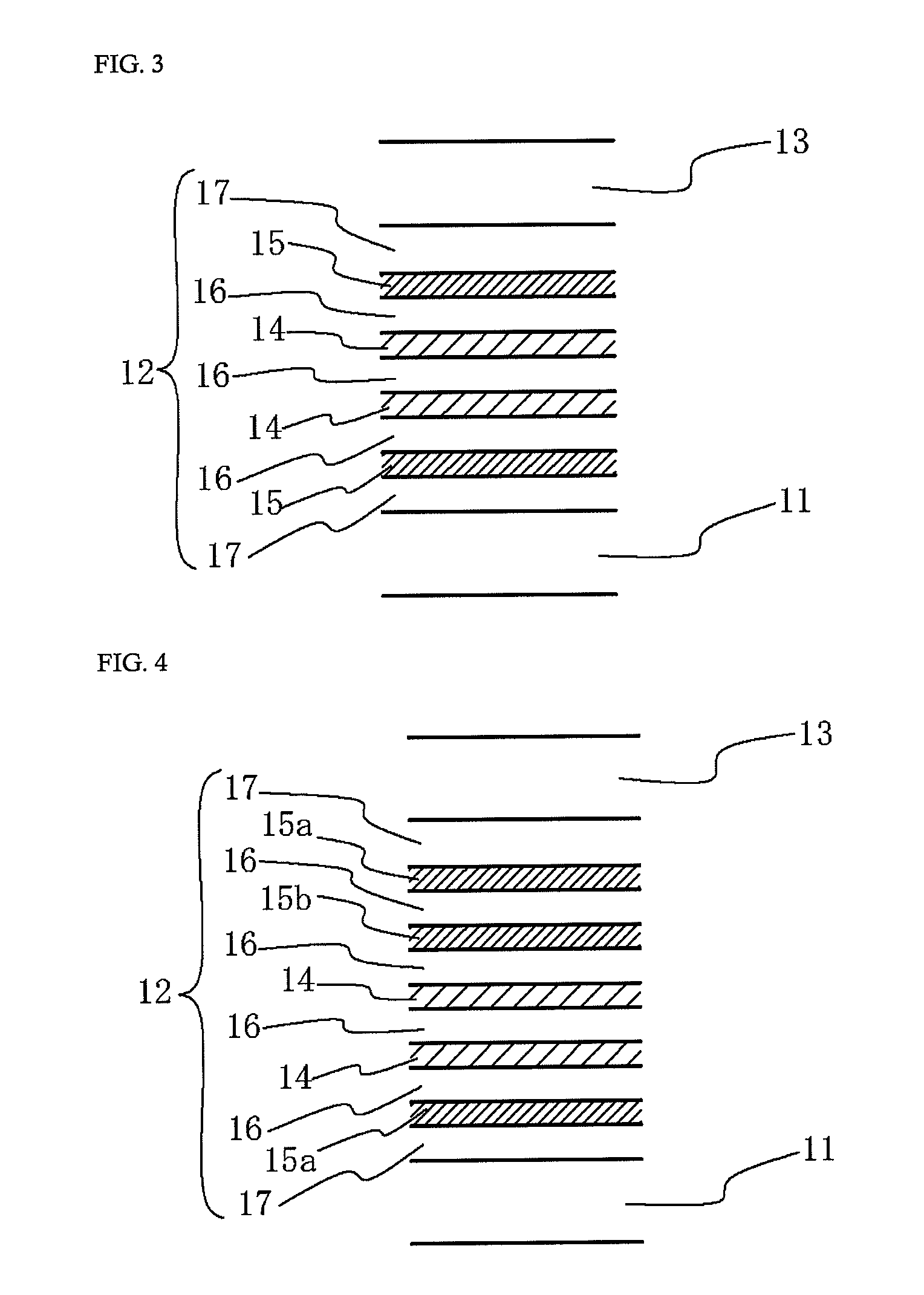Nitride semiconductor light emitting element
a light-emitting element and nitride technology, applied in the direction of basic electric elements, semiconductor devices, electrical equipment, etc., can solve the problems of insufficient curing of deeper portions, difficult to produce efficient and stable ratio of emission peak intensity, and decrease in luminous efficiency in longer wavelengths. , to achieve the effect of large band gap energy, stable ratio of emission intensity, and large bang gap energy
- Summary
- Abstract
- Description
- Claims
- Application Information
AI Technical Summary
Benefits of technology
Problems solved by technology
Method used
Image
Examples
embodiment 1
[0033]FIG. 1 is a cross-sectional view schematically showing a structure of a nitride semiconductor light emitting element according to Embodiment 1 of the present invention. The nitride semiconductor light emitting element 1 includes an n-type nitride semiconductor layer 11, an active layer 12, and a p-type nitride semiconductor layer 13, stacked in this order on a substrate 10. An n-electrode18 is disposed on a portion of the n-type semiconductor layer 11 which is exposed by removing a portion of the p-type nitride semiconductor layer 13, and a p-electrode 19 is disposed on the p-type nitride semiconductor layer 13. The active layer 12 contains a first well layer 14 and second well layers 15 interposing the first well layer 14 therebetween, and barrier layers 16, 17. One second well layer 15 is disposed at respective outermost sides among the well layer, that is, at the closest side to the n-type nitride semiconductor layer 11 and at the closest side to the p-type nitride semicond...
embodiment 2
[0056]FIG. 6 is a cross-sectional view schematically showing a structure of a nitride semiconductor light emitting element according to Embodiment 2 of the present invention. The nitride semiconductor light emitting element 2 has a stacked layer structure in which, the p-type nitride semiconductor layer 23, the active layer 22, the n-type nitride semiconductor layer 21 are stacked in this order via the conductive bonding layer 201 on the supporting substrate 200, and the n-electrode 28 and the p-electrodes 29 are respectively disposed on the opposite sides of the stacked layer structure. As described above, the nitride semiconductor light emitting element 2 of Embodiment 2 has a counter electrode structure in which the p-electrode 29 and the n-electrode 28 are disposed on the respective opposing sides of the stacked layer structure, and the p-electrode 29 side is bonded to the supporting substrate 200. Substantially the same members as in Embodiment 1 can be used as the members comm...
example 1
[0061]The nitride semiconductor light emitting element according to Example 1 includes, as shown in FIG. 6, a stacked layer structure in which the p-type nitride semiconductor layer 23, the active layer 22, and the n-type nitride semiconductor layer 21 are stacked via the conductive bonding layer 201 on the supporting substrate 200 made of an alloy of Cu and W, and the p-electrode 29 is disposed at the p-type nitride semiconductor layer 23 side and the n-electrode 28 is disposed at the n-type nitride semiconductor layer 21 side.
[0062]The nitride semiconductor light emitting element 2 can be formed as shown below. First, using a substrate made of sapphire (C-plane) as the growth substrate, a buffer layer made of GaN with a thickness of 200 angstromes and an under layer made of undoped GaN with a thickness of 4 □m are grown in this order on the substrate. Next, as the n-type nitride semiconductor layer 21, an n-type contact layer of Si-doped Al0.07Ga0.93N is grown to a thickness of ab...
PUM
 Login to View More
Login to View More Abstract
Description
Claims
Application Information
 Login to View More
Login to View More - R&D
- Intellectual Property
- Life Sciences
- Materials
- Tech Scout
- Unparalleled Data Quality
- Higher Quality Content
- 60% Fewer Hallucinations
Browse by: Latest US Patents, China's latest patents, Technical Efficacy Thesaurus, Application Domain, Technology Topic, Popular Technical Reports.
© 2025 PatSnap. All rights reserved.Legal|Privacy policy|Modern Slavery Act Transparency Statement|Sitemap|About US| Contact US: help@patsnap.com



